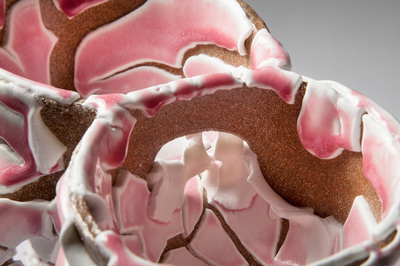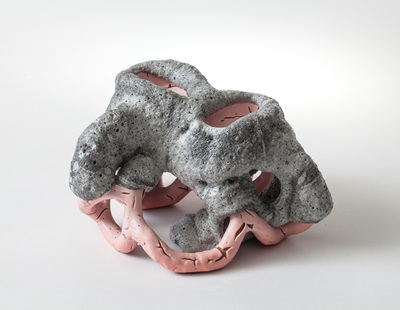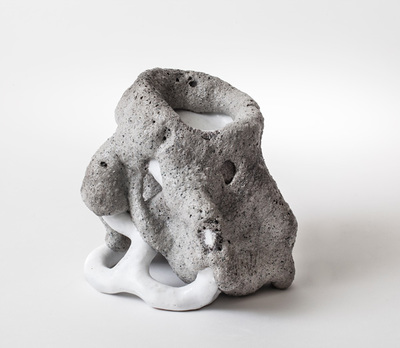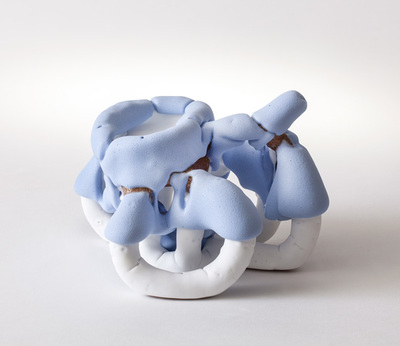| Making ceramics is a difficult process. It takes years and a lot of failures to master this art. Still, even the most experienced potter will smash some pieces sometimes. Due to the many steps involved, making ceramics is a highly unpredictable art. In the kiln the temperature goes well over 1000°C, the clay and the glazes melt and bond in a unique way. This duality between mastery and uncertainty push some ceramists to explore and test boundaries. Bente Skjøttgaard is one of them. Her pieces are inspired by nature (trees, clouds, etc), playing with void and empty spaces. However, what makes her work stand out is her unusual use of glazes. Looking at her pieces, I was fascinated by the variety of textures she created. Her glazes range from glossy to rough with everything in between. The glazes are applied in very thick layers and envelop the clay structure as if it was a living organism. I was also surprised to discover that each piece is numbered and named as a "species", as if it was a taxonomy. The dialogue between the different glazes and the raw clay sometimes still visible is stunning. Even if there are some common shapes in her pieces, each one is very unique. We can feel that Bente Skjøttgaard is always exploring. | |
“The basic elements in my work are the materials: clay and glaze. I enjoy engaging in expressive ceramic experiments that test the boundaries of material and form.”
Bente Skjøttgaard in Ceramics Now.
_Her pieces are now exhibited in prestigious museums throughout Europe and recognized as pieces of art, which is usually quite a challenge for ceramists who tend to be categorized as craftsmen and not artists. Bente Skjøttgaard succeeds remarkably in challenging this obsolete boundaries.
On that topic, I recommend this short video by Laura Morelli about the distinction between arts and crafts throughout history.
On that topic, I recommend this short video by Laura Morelli about the distinction between arts and crafts throughout history.




